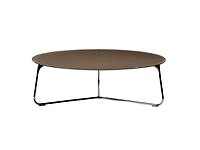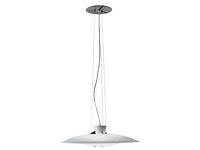It is often said that interior
lighting can make or break a
room. This principle applies
to outdoor lighting as well. In
addition to your house itself, its
environment is equally important
and needs full attention when it
comes to lighting selection.
In order to choose the perfect
outdoor lighting, it is strongly
advised to make an appeal to
a lighting expert. He or she can
determine which type of light
should be used to experience
and enjoy its full capacity. If
you prefer to start by yourself,
you should read and take the
following do’s and don’ts into
account in order to achieve the
perfect result.
Everything starts with your
house
Your house is the center piece
of your property. By using the
appropriate lighting, it will
enforce its visibility in the dark.
In addition, it will contribute to
the security of your property.
During the set-up, it is crucial
to ensure the walls as well
as the architectural elements
of your house are sufficiently
illuminated.
Use of shadow
Outdoor lighting doesn’t
only concern what can be
illuminated, but puts focus on
the interplay of light and shadow
together. For example: by using
lights at the base to shine up
a stone wall, the texture of the
material will be accentuated to
create a certain level of depth.
Work with layers
Depth and light texture are
created by using different layers
of light. Imagine you have a
beautiful object in your garden
that you would like to illuminate.
While setting up the lighting
from different angles, the object
will be the eye-catcher of your
garden, instead of the lighting
itself. This creates a unique
effect that won’t interfere with
the visual strength of the object.
Furthermore, you can add
visual depth to the outdoor area
by correctly positioning your
outdoor lighting. We often see
that only the façade or terrace
is illuminated and is creating
a large black depth from the
inside. You can easily resolve this
side effect by illuminating a few
trees/objects in the perimeter of
your house. By doing this you will
increase the outdoor space and
the feeling of safety around your
house.
Choose quality
It may seem commonplace, but
it’s better to choose high-quality
material. In the long run, this
will be more beneficial than
opting for cheaper alternatives
that will decay faster over time.
Moreover, qualitative lighting is
often more economical due to
the choice of materials and type
of luminaires that are used.
Play with lines
Try to avoid the placement
of lighting fixtures in a single
straight line, along a pathway
for example. It gives the
unpleasant feeling of walking
on a driveway or an airplane
runway. Get creative and play
with the aesthetics to create a
unique lighting experience.
Don’t forget details
Generally, there is a strong focus
on large aspects for outdoor
lighting, such as trees and
sculptures. Details are often
forgotten while they can bring
in a decisive effect. Therefore,
look for small areas that can
be accentuated with the right
lighting. This will benefit the
consistency of the bigger
picture.
Limit your choices
As mentioned earlier, everything
starts with your house itself. It
is crucial to maintain the same
lighting style and to avoid a
disorganized range of lights.
Don’t forget to look at the
location of the fixtures as well
and choose a matching model.
This way you avoid a disorderly
excess of all kinds of models.
Avoid solar lights
Individual lighting fixtures that
use solar power are often not
as effective as one might think.
This type of lighting is weather-
dependent and often doesn’t
have a large storage capacity
for a solid light intensity. Solar
lights are rather suitable as
decorative lighting. Therefore,
choose a lighting system that
gives the outdoor lighting the
right power so that you do not
have to worry about poorly
performing luminaires.
character serie
16
kreonicle
17







